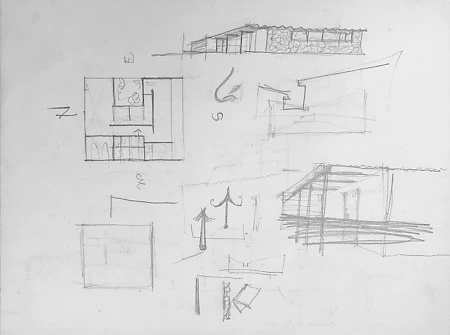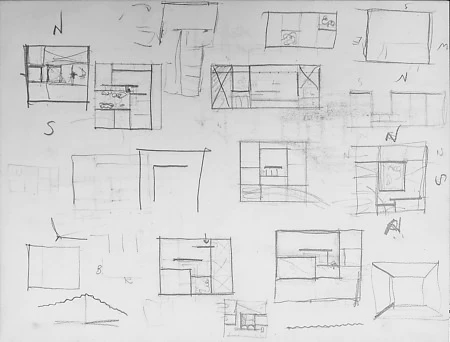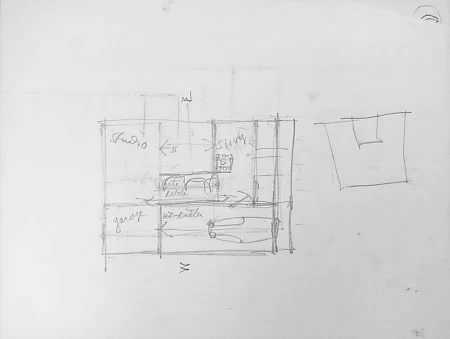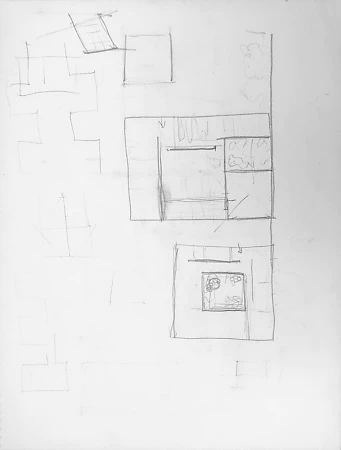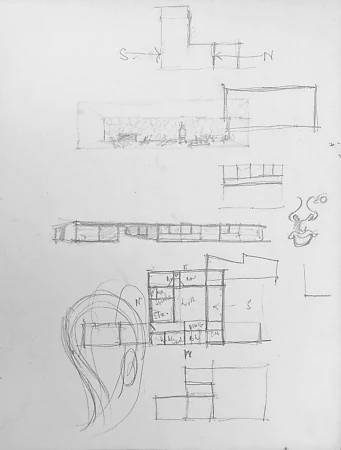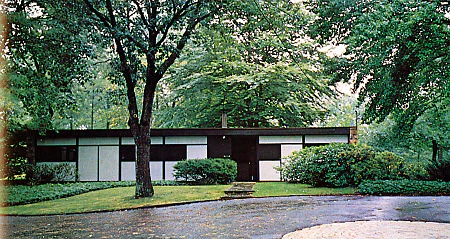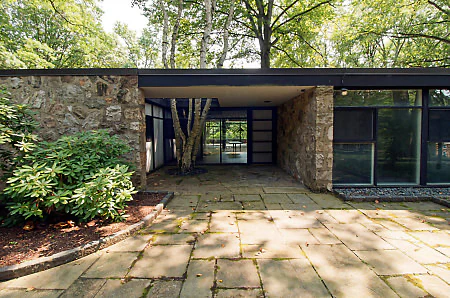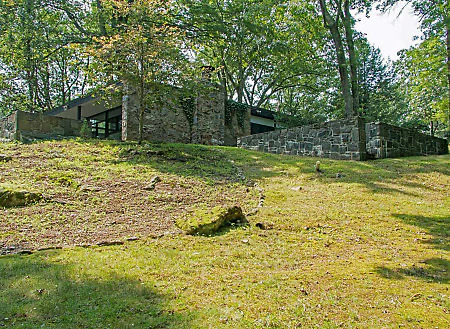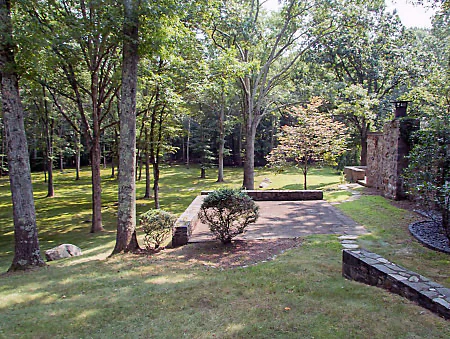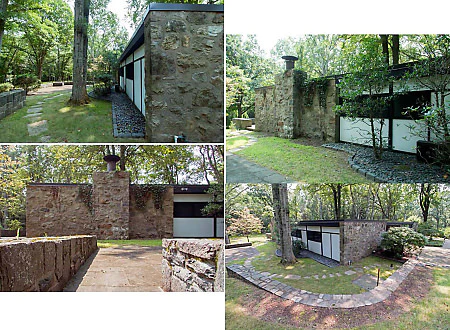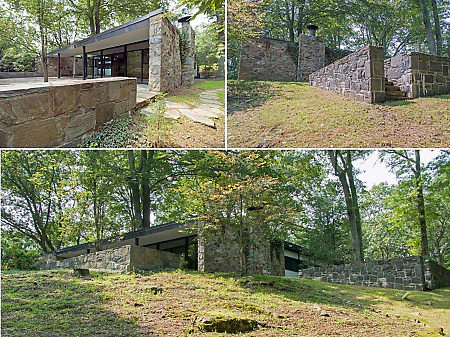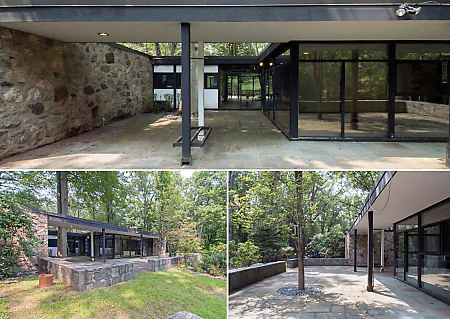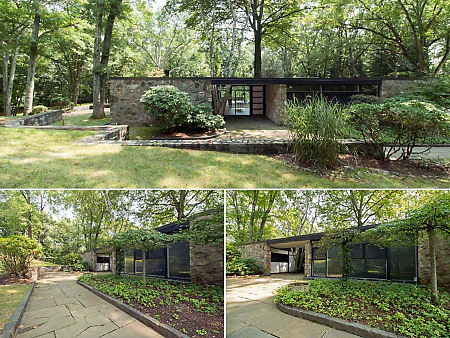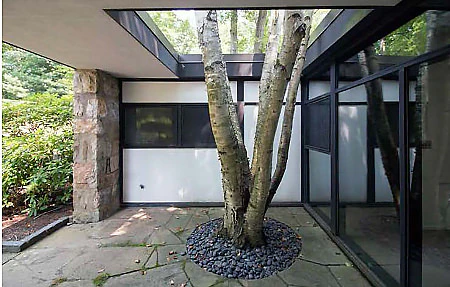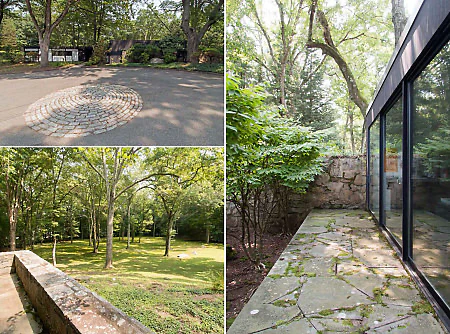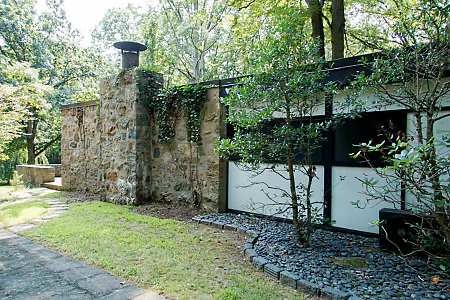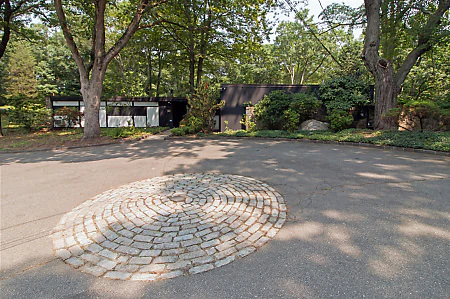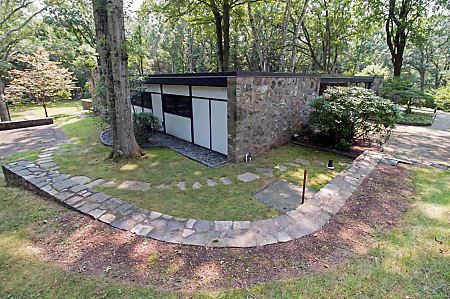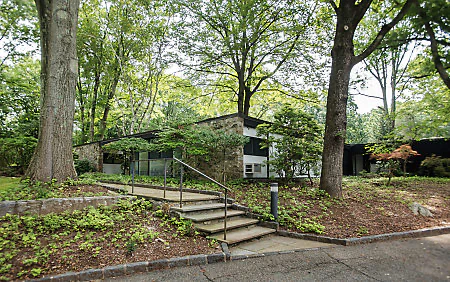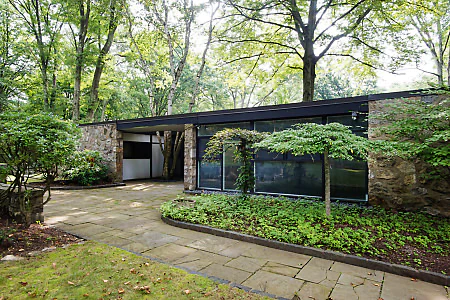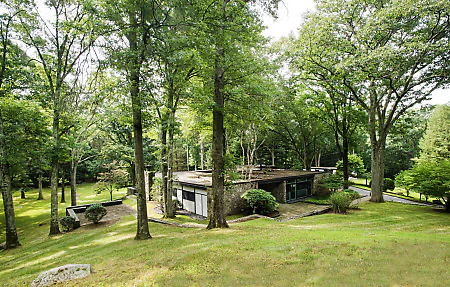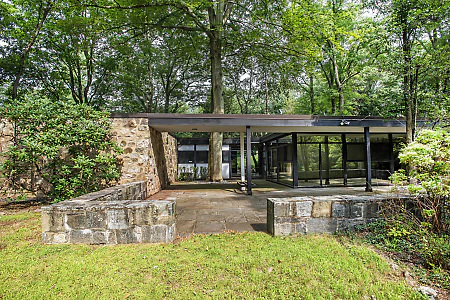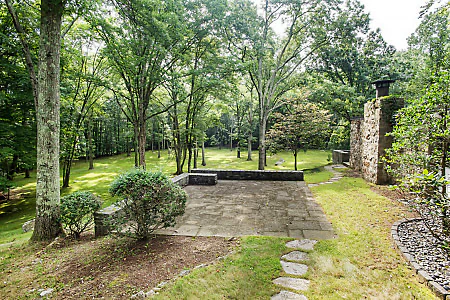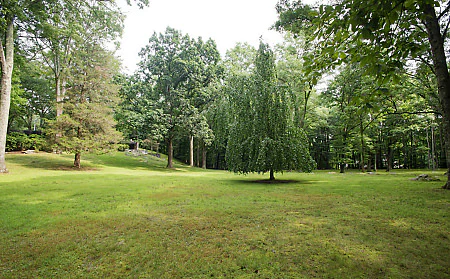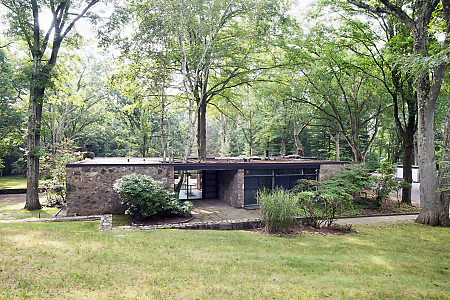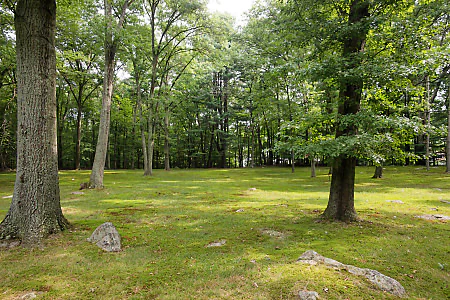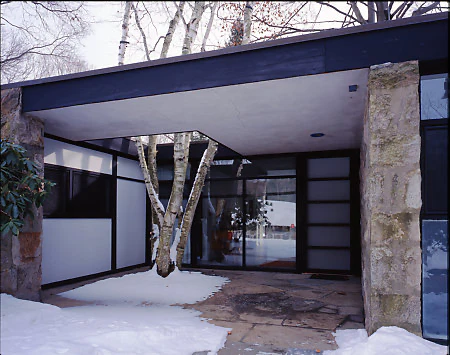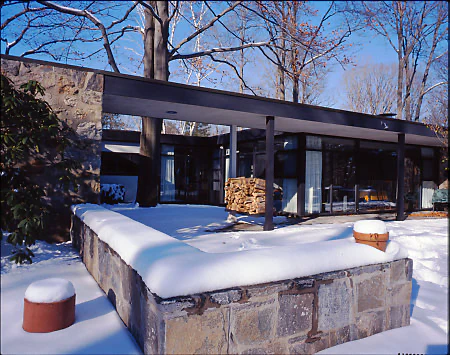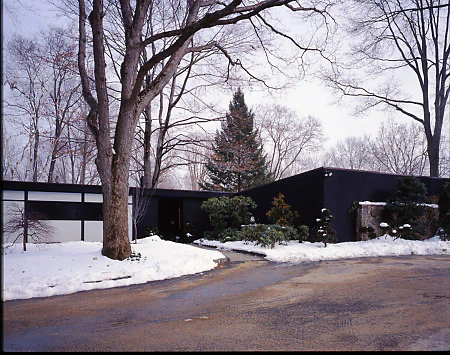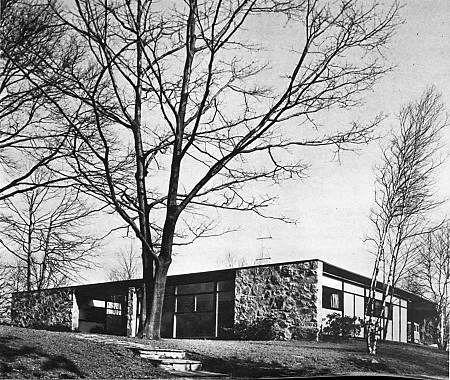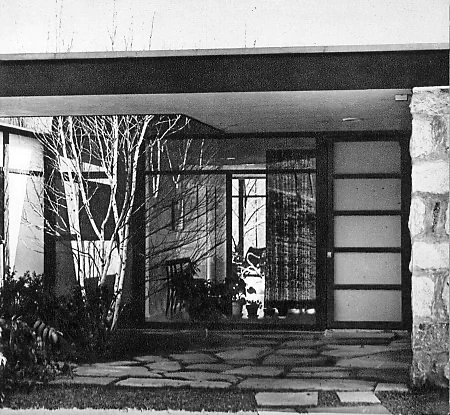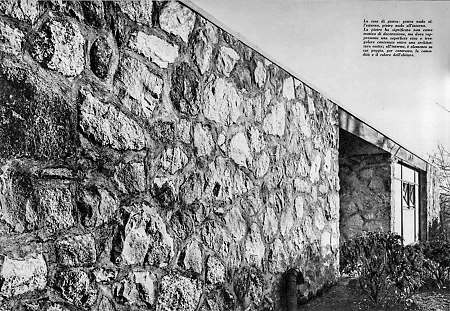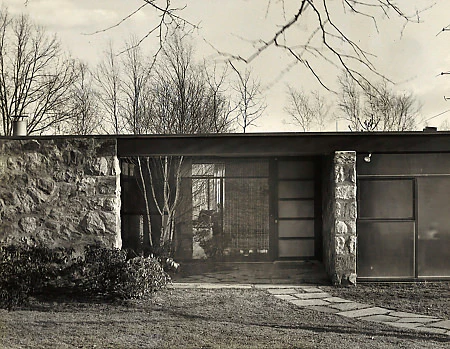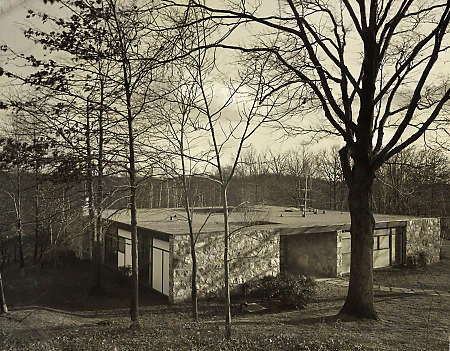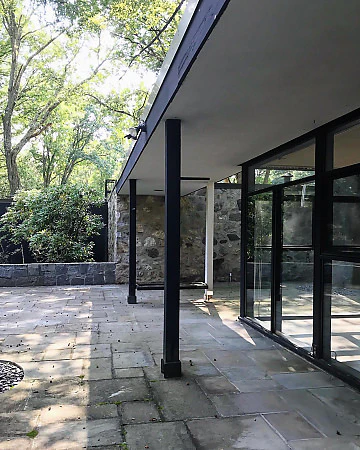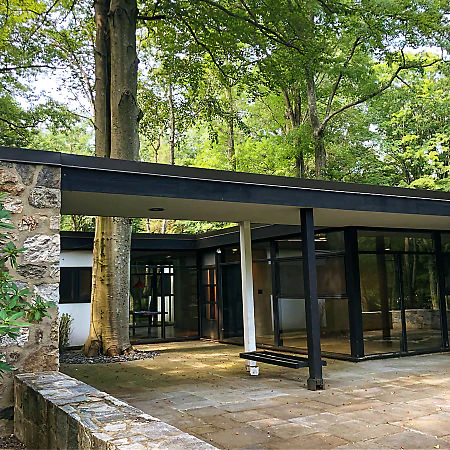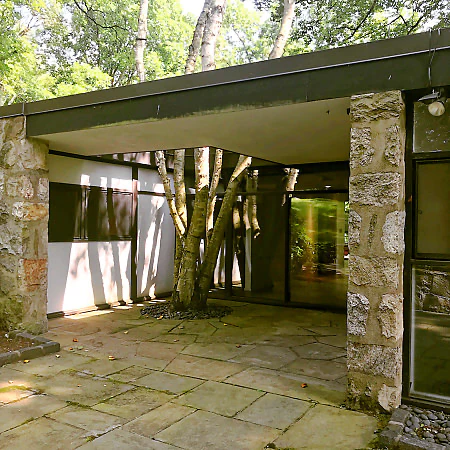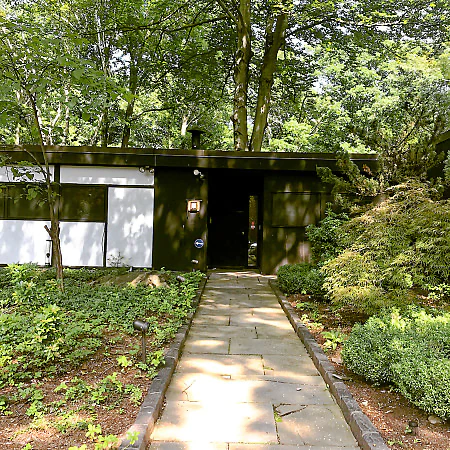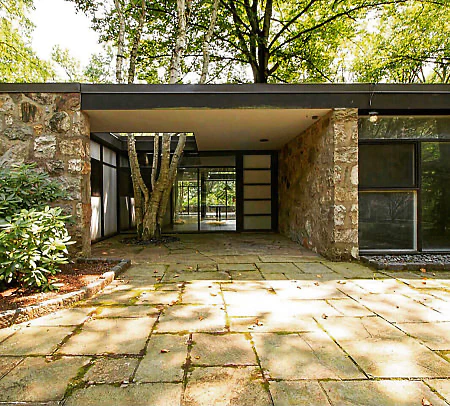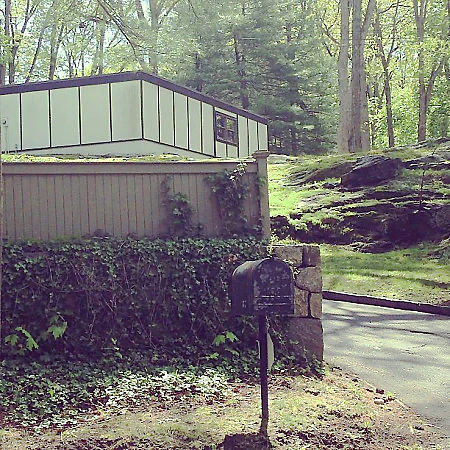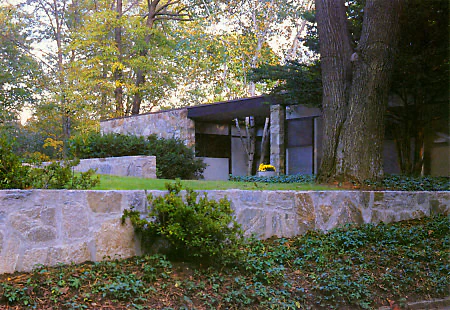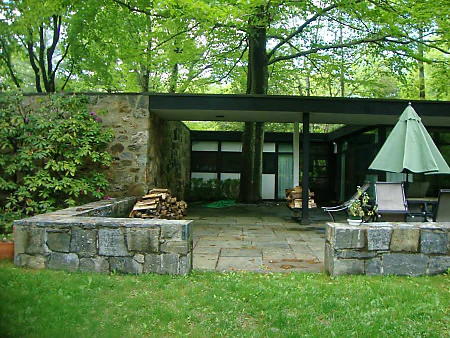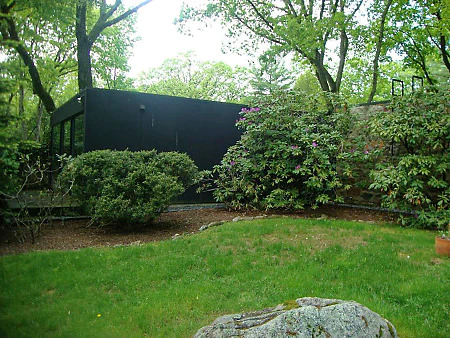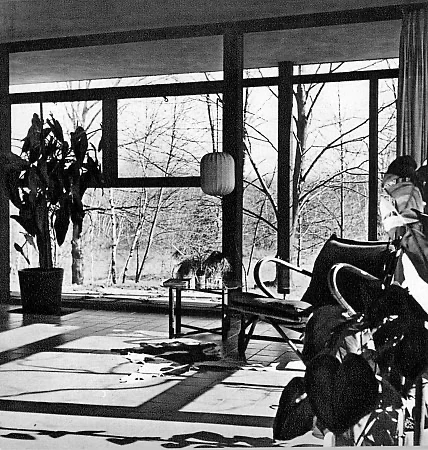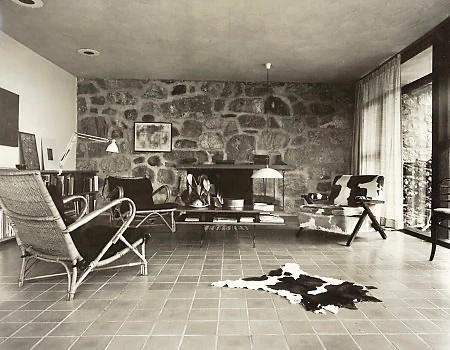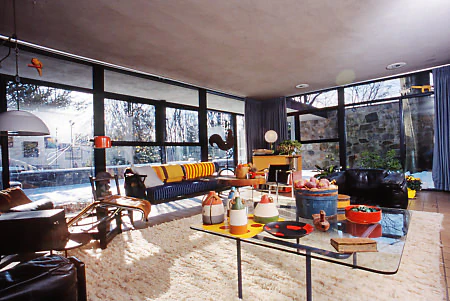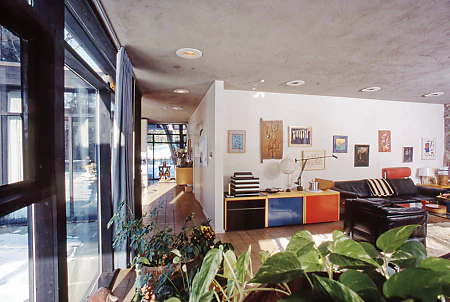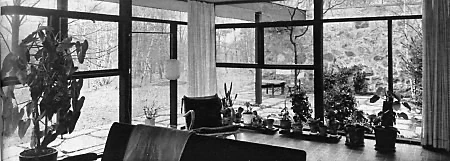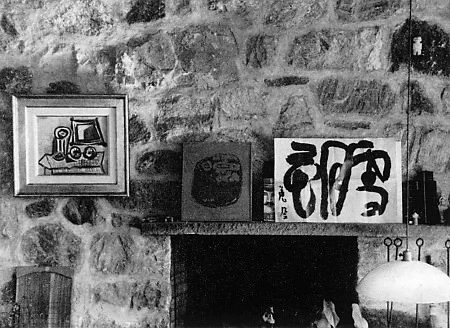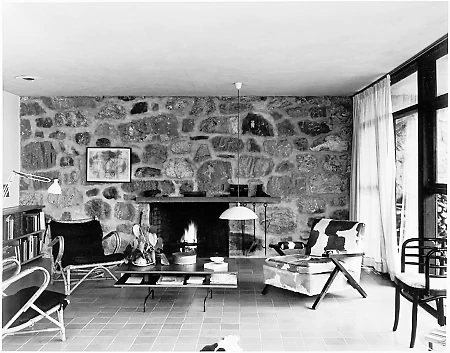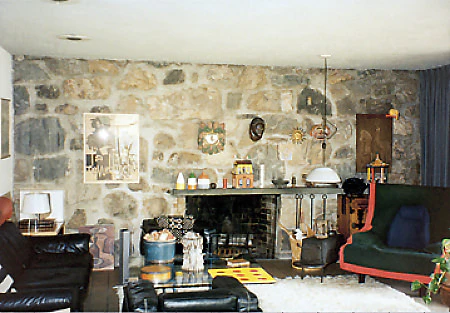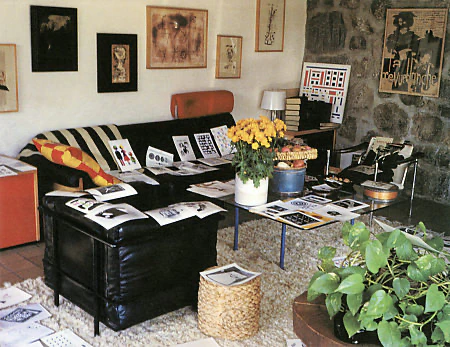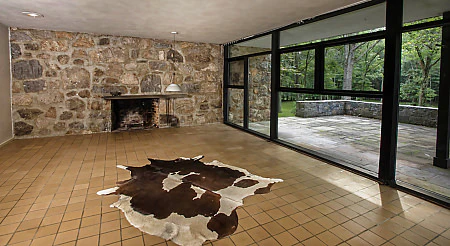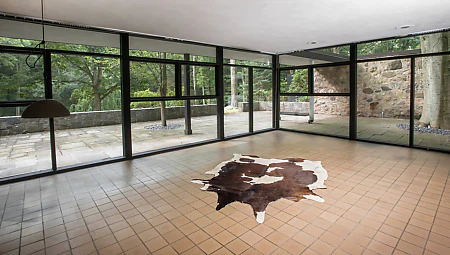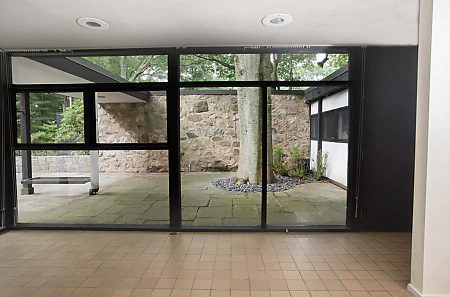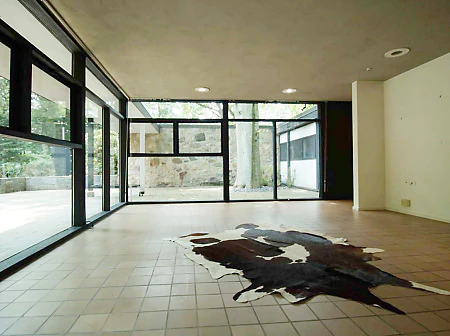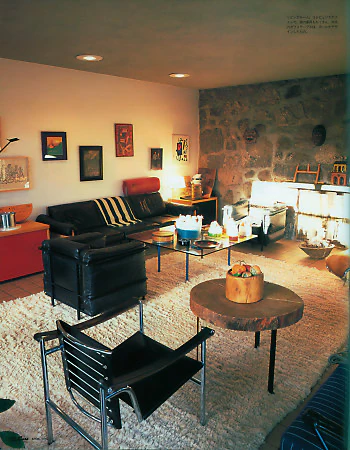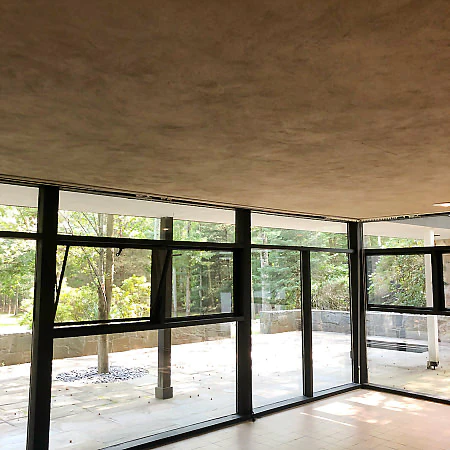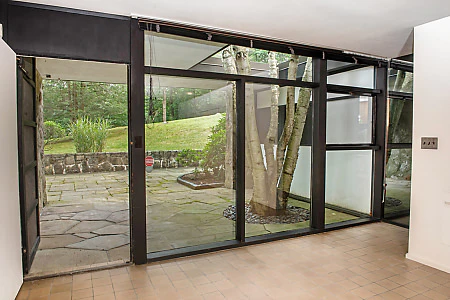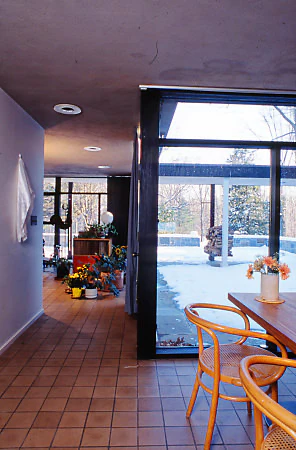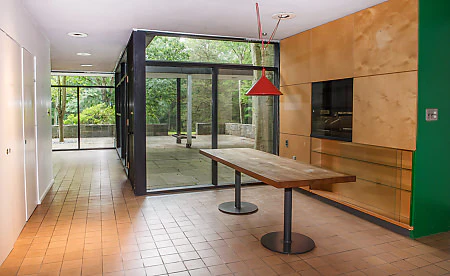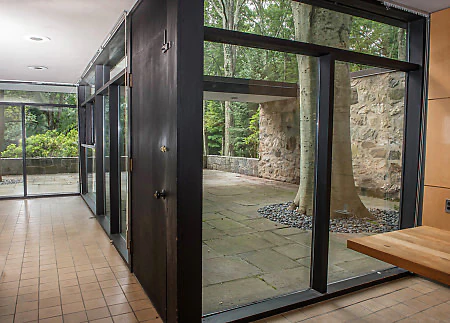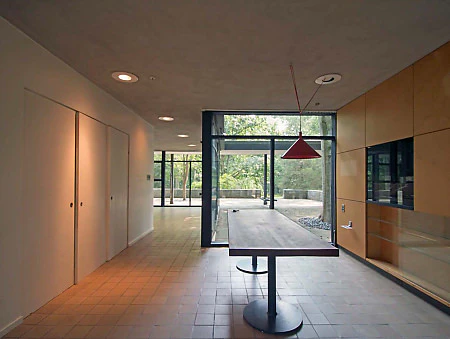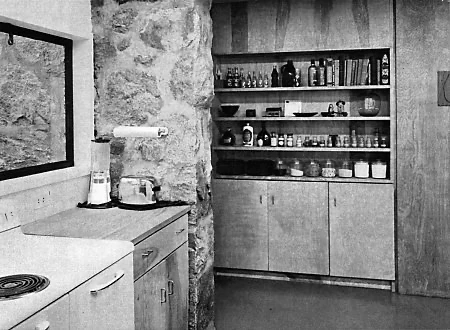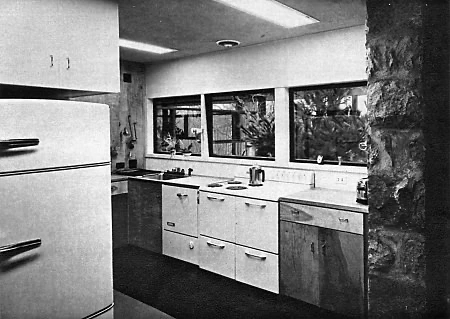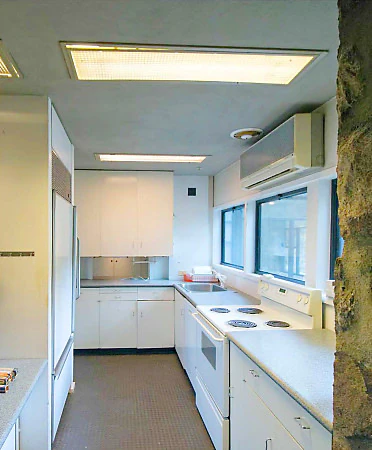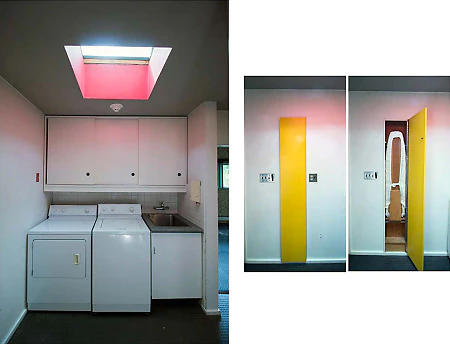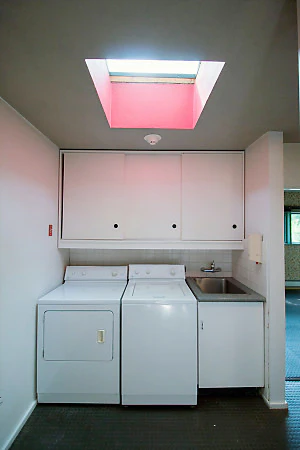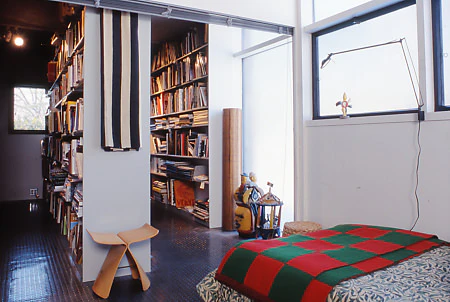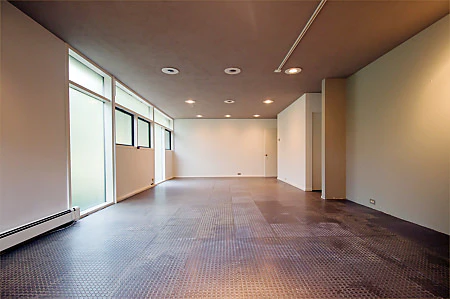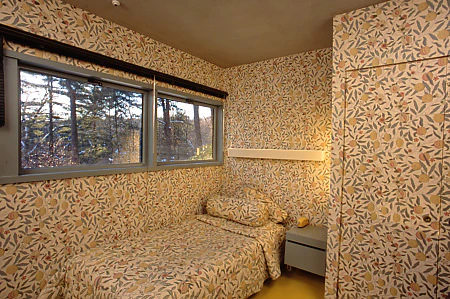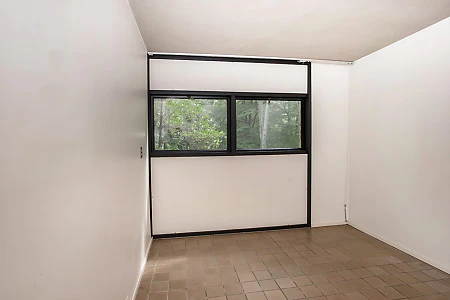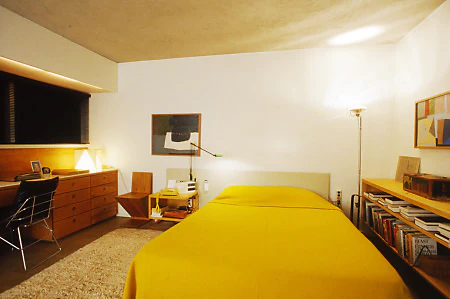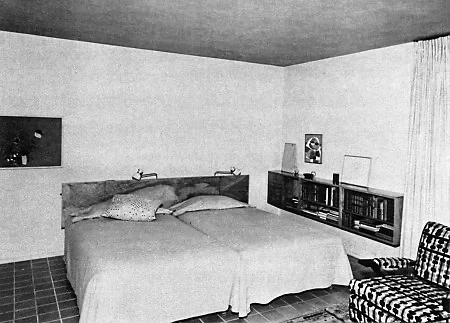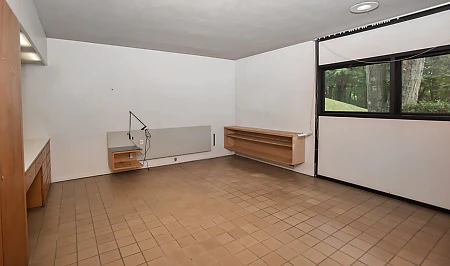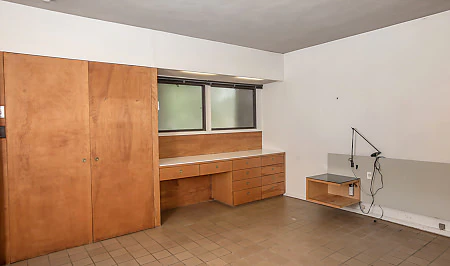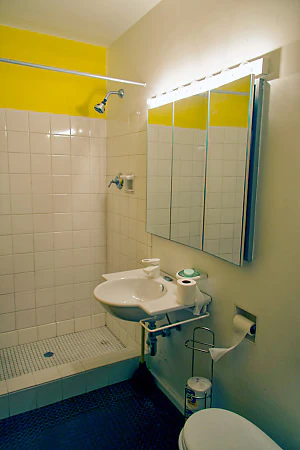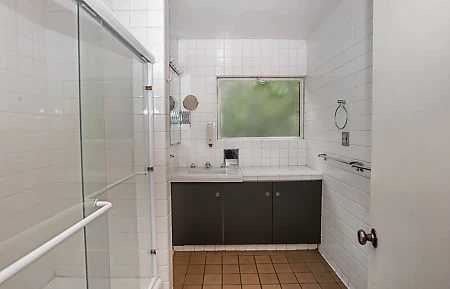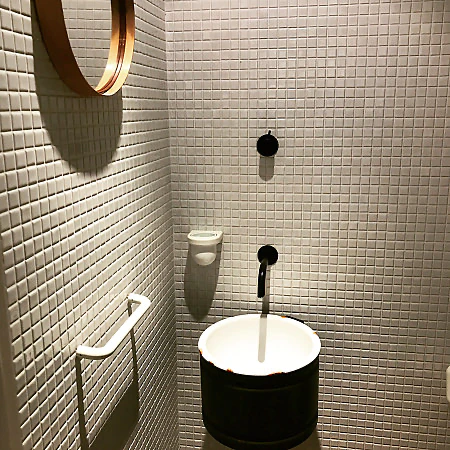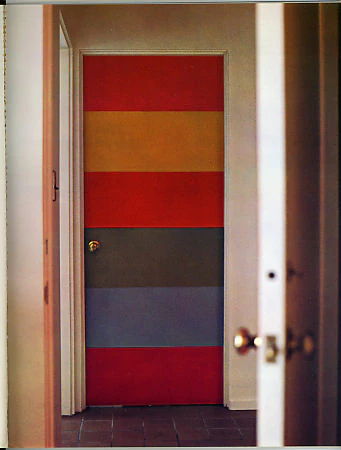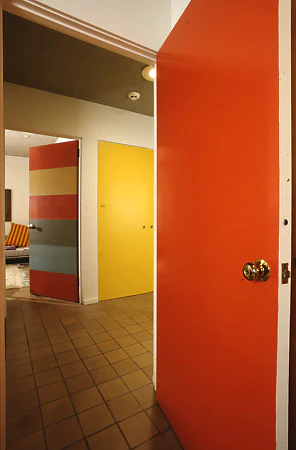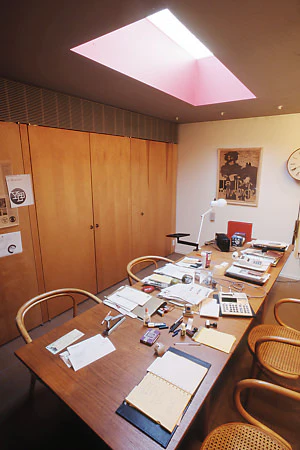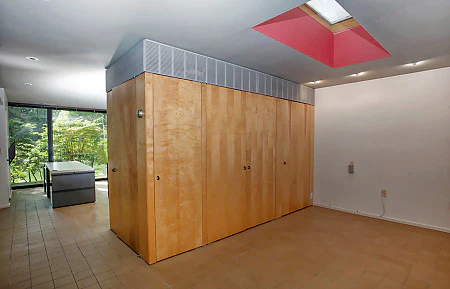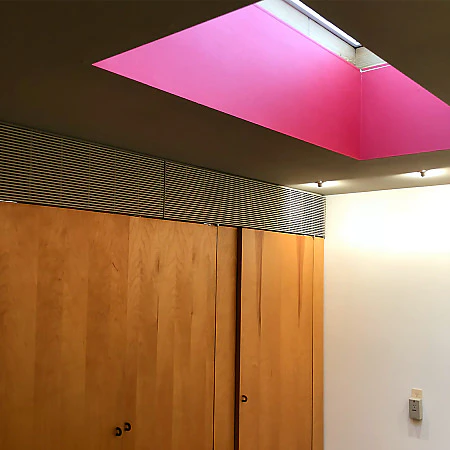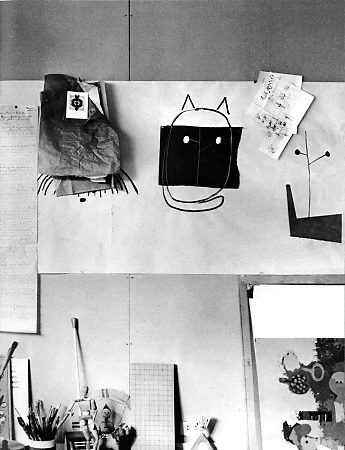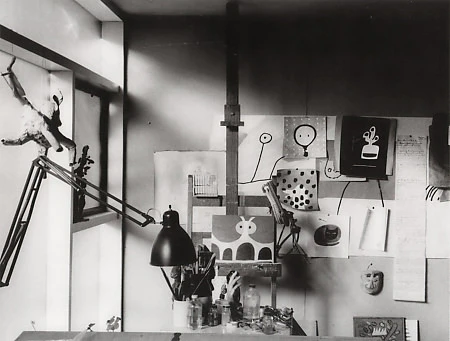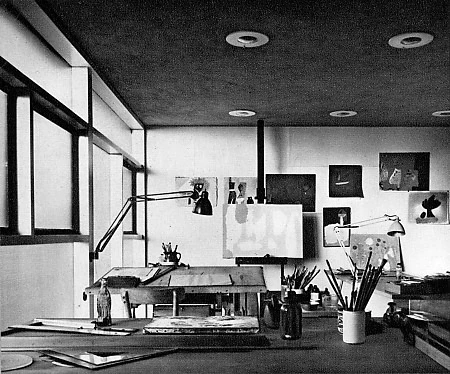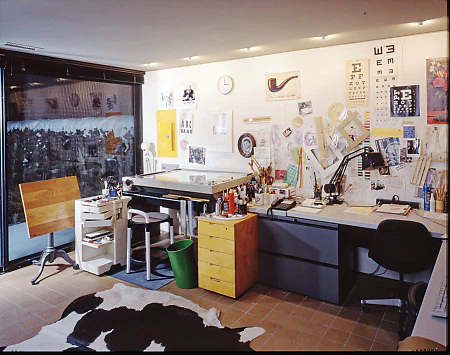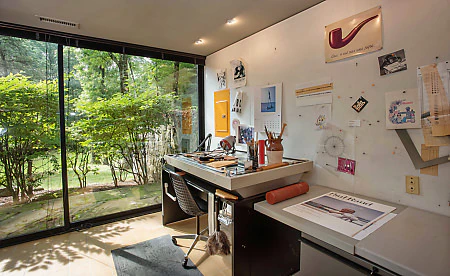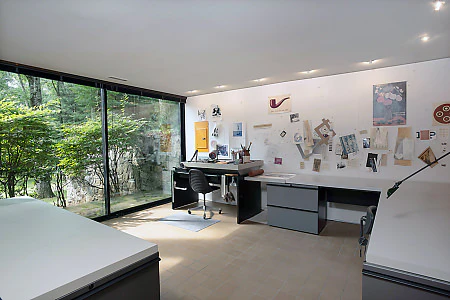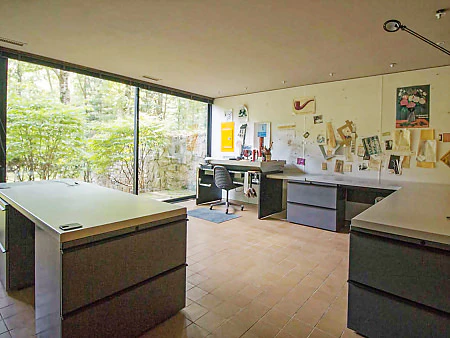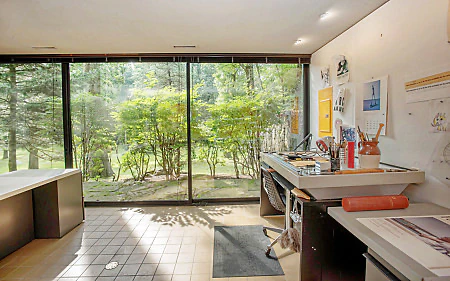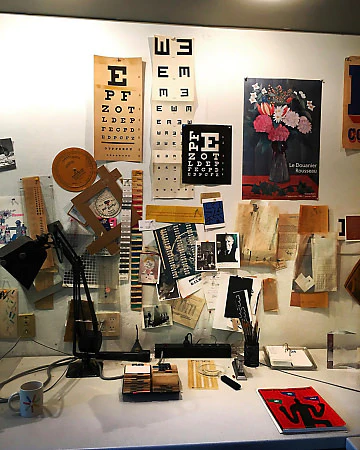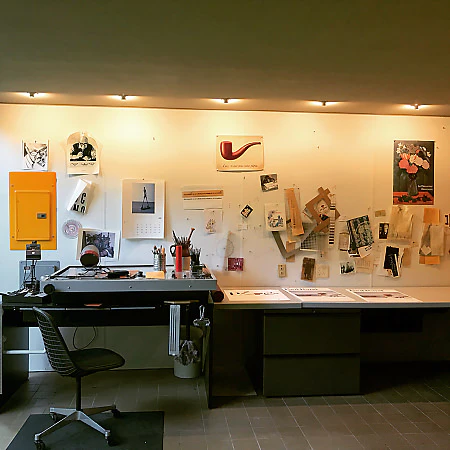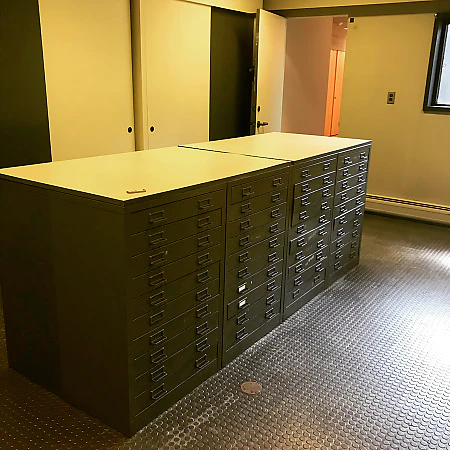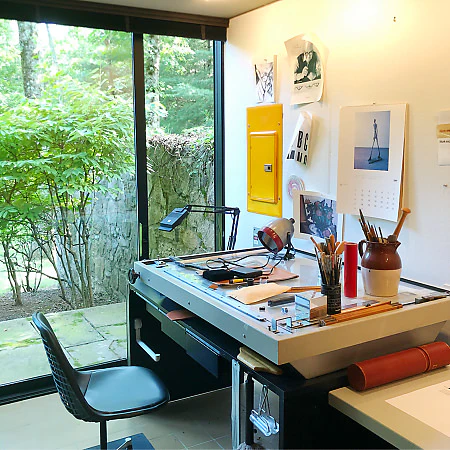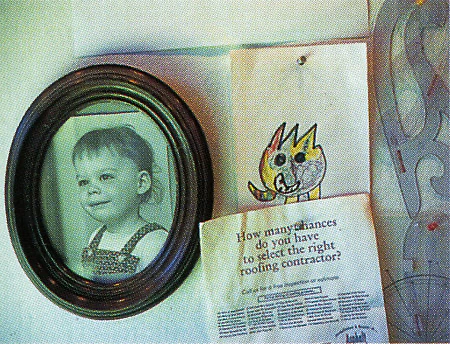Rand House
Paul and Marion Rand’s quintessential mid-century modern home, designed by Paul Rand and Ann Binkley Rand and built in 1953, is on the market. The landmark home, set in the wooded Connecticut town of Weston, is the epitome of modern aesthetics with a touch of Japanese simplicity, exactly the kind of structure you’d picture Rand living in until his death in 1996.
“The Rand House avoids the cliches of the “modernistic”, strives for a warm and companionable use of building materials. The wood used in the frame is a black-stained cypress, the white paneling is of Marlite, and the flags for the court and entrance are blue-stones. The house is congenial to all types of New England weather,” notes the Weston Historical Society in the sales prospectus.
— Steven Heller
The house at 87 Goodhill Road in Weston, CT was named one of the “10 Best Houses of 1953” by Interiors magazine. It was also featured in the August 1953 issue of Esquire in an article entitled, “A House to Live With: Paul Rand, one of America’s great graphic designers, builds a home”:
“A man who knew the secrets of living, Henry David Thoreau, once wrote: ‘I sometimes dream of a … house, standing in a golden age, of enduring materials, and without gingerbread work…containing all the essentials of a house, and nothing for housekeeping…’
Ann and Paul Rand wanted such a house, too, an enduring, essential house, built for beauty and privacy, security and shelter, peace and an intimacy with its surroundings. So they designed theirs as if this were the first house ever built. Mrs. Rand is a graduate architect, Paul Rand a designer and painter, so perhaps this approach was destined to be a creative and tasteful success.”
Paul Rand (1914-1996) at that time was designing advertisements for such clients as Orbach’s department store, Schenley Liquors, and Playtex, as well as book jackets and covers for Alfred A. Knopf and other publishers. His graphic design was characterized by its sly humor and simplicity, combining formal elements from modern painting with bold contemporary typography. He was one of the few American designers to bring the modernist traditions of Cubism and the Bauhaus into his designs.
“Mrs. Rand” was the former Ann Binkley, and she was far more than “a graduate architect.” In fact, she had studied at the famed Illinois Institute of Technology (IIT) with none other than the renowned architect Mies van der Rohe, receiving her B.S. in 1945. She married Paul Rand in 1949 and immediately began work on the house at 87 Goodhill Road in Weston.
Ann Rand had designed another house for herself in Rye, NY. She hired the famous architect Marcel Breuer to design it in 1948; unhappy with his design, she took over and completed the house herself. (“Take that, Marcel Breuer!”)
During their decade or so of marriage, Ann and Paul Rand worked side by side in the studio at 87 Goodhill Road, “the creative heart of the Rand home.” (Esquire)
In 1953, their daughter Catherine was born, and she provided the inspiration for the Rands’ imaginative, unique children’s books.
They published their first, I Know a Lot of Things, in 1956 for legendary children’s book editor Margaret McEldery of Harcourt, Brace & World. (It was reissued in 1973 by Chronicle Books, San Francisco.)
Ann Rand told an interviewer: “I began writing for children during my daughter’s childhood. By watching her explore and learn about the world, I came to see the world–at least to some extent–through a child’s view of it. The rediscovery of the world around me through the eyes of children was exciting and stimulating–an added dimension to the way my peers and I looked and felt about things.”
The New York Times chose I Know a Lot of Things, 1956, Sparkle and Spin, 1957, and Umbrellas, Hats, and Wheels, 1961, as best illustrated children’s books of the year.
In 1960 Ann Rand married Hasan Ozbekhan, a Turkish-born economist and influential professor at the Wharton School in Philadelphia, and they remained married until his death in 2007. She continued her work as an architect, author of novels and children’s books, artist, and community activist.
Paul Rand’s second marriage was to Marion Swannie, who headed the graphic design department at IBM. In 1956 he had been hired as the graphic design consultant for IBM, and he designed the corporation’s logo and entire identity system.
Logos followed for Westinghouse (1961), United Parcel Service (1961), ABC (1962) and Cummins Engine (1979).
From 1956 until the 1990s he was a professor of graphic design at Yale, and until his death in 1996, he worked from his studio at 87 Goodhill Road, designing logos, posters, and books, as well as writing three memoirs.
— Liz Titus, Weston Historical Society

